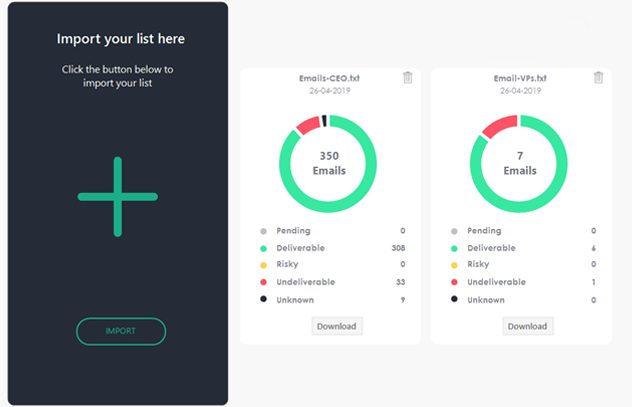

The en dash is used to contrast values or illustrate a relationship between two things. It is also considered poor style (best avoided) to use the en dash in place of the words "to" or "and" in phrases that follow the forms from X to Y and between X and Y. Relatedly, in ranges that include negative numbers, "to" is used to avoid ambiguity or awkwardness (for example, "temperatures ranged from −18 ☌ to −34 ☌"). For example, "a voltage of 50 V to 100 V" is preferable to using "a voltage of 50–100 V".
WHAT IS THE BEST EMAIL VERIFIER MANUAL
Some style guides (including the Guide for the Use of the International System of Units ( SI) and the AMA Manual of Style) recommend that, when a number range might be misconstrued as subtraction, the word "to" should be used instead of an en dash. President Jimmy Carter, in office from 1977 to 1981 For example, the APA style (named after the American Psychological Association) uses an en dash in ranges, but the AMA style (named after the American Medical Association) uses a hyphen: Various style guides restrict this range indication style to only parenthetical or tabular matter, requiring "to" or "through" in running text. This may include ranges such as those between dates, times, or numbers. The en dash is commonly used to indicate a closed range of values – a range with clearly defined and finite upper and lower boundaries – roughly signifying what might otherwise be communicated by the word "through" in American English, or "to" in International English. It is sometimes held that, when used as an interruptor, the en dash should be "open" – spaced on both sides – in contrast to the em dash, which is closed.
 as an interruptor at sentence level, substituting for a pair of commas, parentheses, or to indicate a rhetorical pause. as a substitute for a hyphen in a compound when one of the connected items is more complex than a single word. to connect symmetric items, such as the two ends of a range or two competitors or alternatives. The widths of en and em dashes have also been specified as being equal to those of the upper-case letters N and M, respectively, Īnd at other times to the widths of the lower-case letters. In modern fonts, the length of the en dash is not standardized, and the en dash is often more than half the width of the em dash. The en dash, en rule, or nut dash – is traditionally half the width of an em dash. Seven social sins: politics without principles, wealth without work, pleasure without conscience, knowledge without character, commerce without morality, science without humanity, and worship without sacrifice.
as an interruptor at sentence level, substituting for a pair of commas, parentheses, or to indicate a rhetorical pause. as a substitute for a hyphen in a compound when one of the connected items is more complex than a single word. to connect symmetric items, such as the two ends of a range or two competitors or alternatives. The widths of en and em dashes have also been specified as being equal to those of the upper-case letters N and M, respectively, Īnd at other times to the widths of the lower-case letters. In modern fonts, the length of the en dash is not standardized, and the en dash is often more than half the width of the em dash. The en dash, en rule, or nut dash – is traditionally half the width of an em dash. Seven social sins: politics without principles, wealth without work, pleasure without conscience, knowledge without character, commerce without morality, science without humanity, and worship without sacrifice. 
An em dash or horizontal bar, but not an en dash, is used to set off the source of a direct quotation. The French and Indian War (1754–1763) was fought in western Pennsylvania and along the present US–Canada border (Edwards, pp. An en dash, but not an em dash, indicates spans or differentiation, where it may replace "and", "to", or "through". Glitter, felt, yarn, and buttons – his kitchen looked as if a clown had exploded.Ī flock of sparrows – some of them juveniles – alighted and sang. Glitter, felt, yarn, and buttons-his kitchen looked as if a clown had exploded.Ī flock of sparrows-some of them juveniles-alighted and sang. An (unspaced) em dash or a spaced en dash can be used to mark a break in a sentence, and a pair can be used to set off a parenthetical statement. Usage varies both within English and in other languages, but the usual conventions for the most common dashes in printed English text are these: 4.2.2 Approximating the em dash with two or three hyphens. 4.1.2.2 Subtle differences in punctuation. 4.1.2.1 Simple equivalence (or near-equivalence) of paired parenthetical marks. 4.1.1.2 Inversion of the function of a colon. 4.1.1.1 Simple equivalence (or near-equivalence) of colon and em dash. 3.1.5 Parenthetic and other uses at the sentence level.







 0 kommentar(er)
0 kommentar(er)
